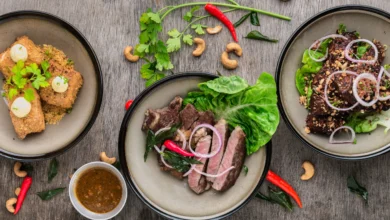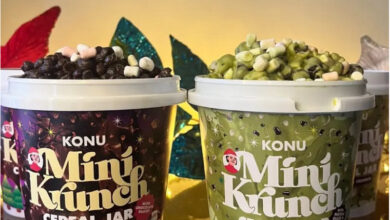
HOT TAKE: Is our Sinigang the Best Vegetable Soup in the World?
Sinigang has arrived. And it is here to stay.
Fondness for the Filipino staple is spreading throughout the world. Recently, TasteAtlas recognized the dish as the World’s Best Vegetable Soup, rating it 4.8 out of 5 stars. TasteAtlas is an online encyclopedia of flavors. It has a collection of global dishes and ingredients numbering over 10,000.
“With its sour lightness perfectly matching the harsh tropical heat of the country, sinigang is a unique soup that is a true representative of Filipino cuisine,” according to TasteAtlas.
Which begs the question: Is our sinigang truly the world’s best vegetable soup? What exactly makes it world-class? Let’s dive in!
A versatile dish
It’s the versatility of sinigang that captivated the attention of international diners and culinary professionals surveyed by TasteAtlas. According to renowned Filipino cuisine advocate, Chef Myrna Segismundo:
Sinigang uses a wide variety of ingredients that perfectly represents the uninhibited selection of vegetables produced in the country. These include onions, tomatoes, green beans, green long peppers, lady fingers, water spinach, radish, taro, and eggplant. There are even emerging versions with fruits in it, like watermelon and strawberries.
Then there are the souring agents for sinigang. Filipinos can’t keep themselves from using different ingredients! It’s the perfect balancing act of the sourness and savory duality of the dish. From the usual sampalok (tamarind) to star fruit (balimbing), batuan (batwan) to ripe guavas – these are the more common ones. Then there’s bilimbi fruit (kamias), pineapple, tamarillo, mangoes, calamansi, mangosteen, and the list goes on!
It is indeed such a versatile dish that can be served to different palates, no matter the diet restrictions and preferences!
An unfamiliar and distinctive flavor
For perspective, it seems the world’s unfamiliarity to the distinctive flavor of sinigang serves as the main appeal of the dish. This is according to restaurateur and TV host, Chef Sandy Daza. All the way back in the 70’s when their family had a Filipino restaurant named Aux Iles Philippines in Paris, he witnessed how sinigang became a hit among fine-dining French. They loved it even back then!
Sinigang’s perfect combination of sour and savory notes easily makes Filipinos salivate, but now it seems the world is also ready to be dazed beyond doubt. We all know the sensation by heart – it’s love at first sip! How it hits the gullet thoroughly with the warmth of the soup, and the mouth filling with piquancy of the blended flavors. The fresh greens, the rich-in-protein ingredients – it truly is a heavenly mix!
RELATED: The Best-Kept Secrets of Pinoy Cuisine
The best representation of the Philippines
In the essay “Why Sinigang” by historian and food writer Doreen Fernandez, it’s claimed that the dish has long been stewing in Filipino’s pots even before colonizers arrived. Hence, the existence of sinigang can date back through innumerable generations of Filipinos’ households.
Considering the archipelagic landscape of the country, sinigang brings the diverse culture and bountiful produce of the Philippines to the fore. We may consider that the dish the definitive melting pot of the country’s various cultures, with every region providing its own variation in preparing it. This of course depends on the availability of ingredients and preferences shaped over time. A true highlight of the creative potential of Filipinos in the culinary world!
In addition, the Philippines is well-known as a rice-eating country. That explains why we favor the sharp contrast of dishes such as sinigang when paired with rice. The texture and blandness of rice combines with the sour flavor of sinigang, delivering the perfect everyday soup for our often humid surroundings.
Today, our love for sinigang has allowed it to travel to different continents across the world. It remains one of the go-to dishes served by Pinoy households to give their visitors a feeling of “home.” Now how about that for a warm invitation?
Kain!




